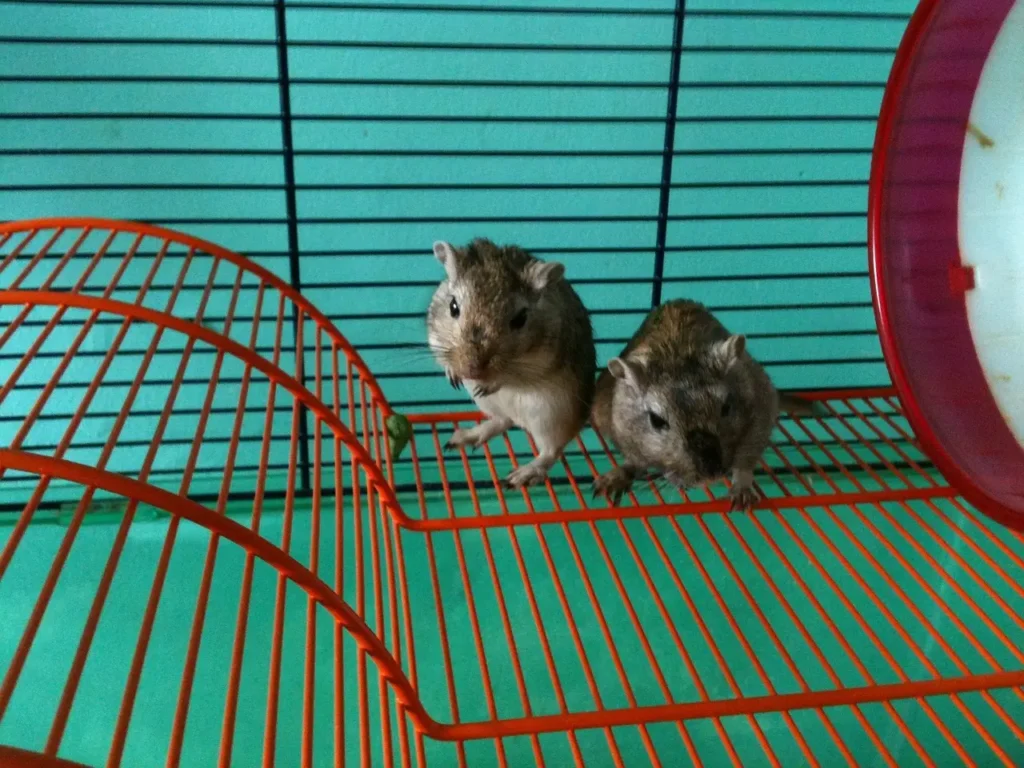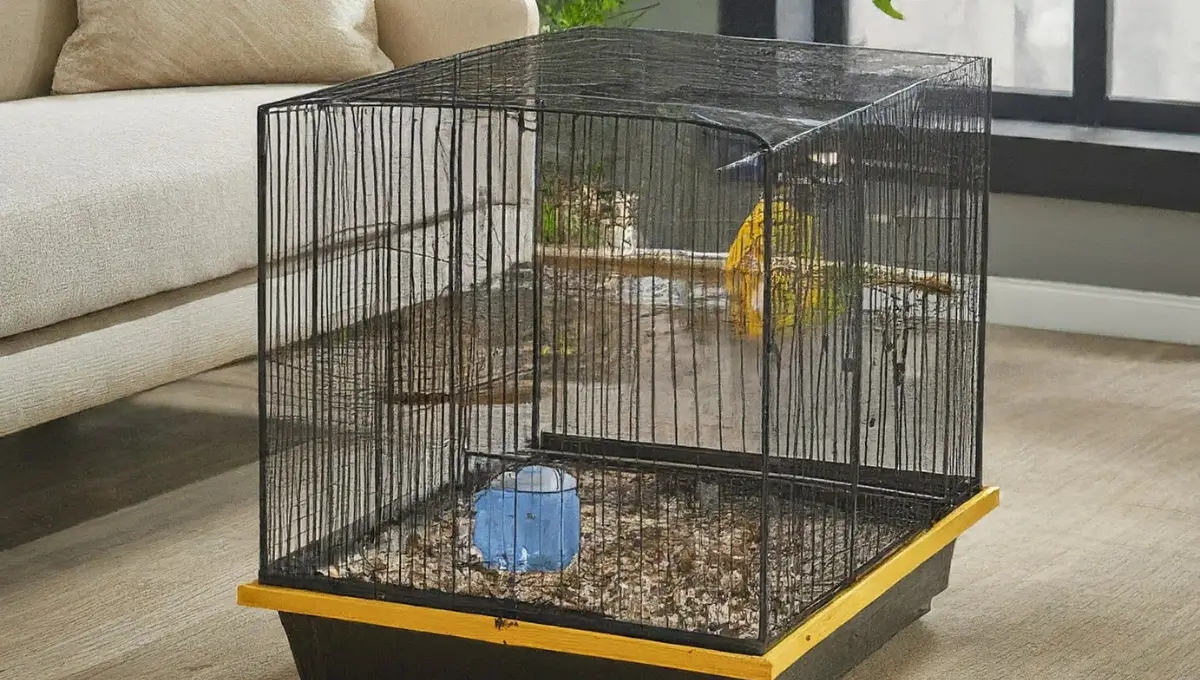Choosing the perfect spot for your gerbil cage is more than just a matter of convenience. It’s about creating a safe, comfortable, and stimulating environment for your furry friend. Gerbils, with their curious and active nature, require a well-thought-out space to thrive.
In this article I’ll guide you the essential factors to consider when deciding where to place your gerbil’s cage, ensuring it leads a happy and healthy life.
Ideal Conditions for a Gerbil Cage
Quiet and Peaceful Environment
Gerbils are sensitive creatures that can easily become stressed by loud noises and frequent disturbances. A quiet and peaceful location is crucial for their well-being.
Avoid placing the cage in high-traffic areas of your home, such as near the television, stereo systems, or in hallways where people constantly pass by. Instead, opt for a serene corner where your gerbil can enjoy its days without the stress of constant noise.
Temperature and Lighting
Gerbils thrive in warm and dry conditions, reminiscent of their natural desert habitats. However, direct sunlight through windows can lead to overheating and discomfort. Choose a spot that avoids direct sun exposure, ensuring the area is well-ventilated yet free from drafts.
A room with filtered sunlight provides an ideal balance, offering warmth without the risk of overheating. Remember, the ideal temperature range for gerbils is between 65°F to 75°F (18°C to 24°C).
Safety from Other Pets
If you have other pets, especially predatory ones like cats or dogs, it’s vital to place the gerbil cage in a secure location. Predatory pets might see gerbils as prey, causing stress or potential harm. Ensure the cage is elevated or in a room that other pets cannot access, providing a safe haven for your gerbil to live without fear.
Also read: How To Clean Out A Gerbil Cage?
Specific Room Recommendations
Bedroom Considerations
While bedrooms can offer a quiet environment, there are several factors to consider. Due to their crepuscular nature, gerbils are most active during dawn and twilight. Their nighttime activities, such as running on the wheel or digging, might disturb your sleep. If you’re a light sleeper, it might be best to choose another room for your gerbil’s cage.
Living Areas and Studies
Living areas and studies often provide the ideal conditions for a gerbil cage. These rooms typically have a steady flow of indirect sunlight and are used during the day, aligning with your gerbil’s active periods.
Ensure the room is not the center of household activity to minimize stress. A quiet corner in a study, where noise levels are low, and traffic is minimal, can be the perfect spot for your gerbil to observe its surroundings peacefully.
Choosing the right location for your gerbil cage is crucial for its health and happiness. By considering the noise level, temperature, lighting, and safety from other pets, you can create a nurturing environment for your gerbil.
Whether you decide on a bedroom, living area, or study, ensure the space meets all the necessary conditions for your gerbil to thrive.
Also read: Can Gerbils Live in Bin Cages?
Optimizing Your Gerbil’s Living Space: Cage Setup and Accessories

Creating the perfect habitat for your gerbil involves more than just finding the right spot in your home. It’s about ensuring their cage is a safe, engaging, and comfortable environment. Let’s dive into how you can optimize your gerbil’s living space with the right setup and accessories.
Adequate Space and Safety Features
A gerbil’s cage is its kingdom, and like any good kingdom, it needs to be spacious and secure. The minimum size of the gerbil cage is 20 gallons, appropriate for a pair of gerbils., but if you can go bigger, your furry friends will surely appreciate it. This space allows them to dig, explore, and play without feeling cramped.
Safety is paramount. Ensure the cage is escape-proof and made from materials that can withstand a gerbil’s gnawing habits. Aquariums with secure mesh tops or terrariums are excellent choices, providing ample ventilation while keeping your gerbils safely inside. Avoid cages with wide bar spacing or plastic components that gerbils can chew through.
Enrichment and Comfort
Gerbils are active and curious animals that require mental and physical stimulation. Fill their cage with a variety of toys, such as wooden chew blocks, tunnels, and wheels, to keep them entertained. Ensure the wheel is solid-surfaced to prevent injuries, and introduce new toys regularly to keep their environment stimulating.
Bedding is another critical aspect of your gerbil’s habitat. A deep layer of paper-based or aspen bedding allows them to indulge in their natural burrowing behaviors. Avoid cedar and pine shavings, as the oils can be harmful to gerbils.
Additionally, provide a cozy nest box for sleeping and privacy, which can be as simple as a cardboard box or a commercially available wooden house.
FAQs
Should the cage be on the floor or elevated?
Elevating the cage protects gerbils from drafts and potential threats from other household pets. However, ensure the stand or table is stable and sturdy to prevent the cage from tipping over, which could lead to injury or escape.
Can gerbils be kept in a bedroom?
Yes, gerbils can live in a bedroom, but their dawn and dusk activity may disturb light sleepers. If you’re sensitive to noise, consider placing the cage in another quiet area where their nocturnal habits won’t disrupt your sleep.
How do gerbils react to other household pets?
Gerbils may feel threatened by larger pets, leading to stress. It’s essential to keep the gerbil cage in a secure area away from predatory pets or ensure it’s elevated and out of reach to prevent any potential harm or stress to your gerbils.
Is direct sunlight a concern?
Direct sunlight can significantly increase the temperature inside the cage, leading to overheating and discomfort for gerbils. Place the cage in an area with indirect sunlight to maintain a comfortable and stable environment for your pets.
Conclusion
Finding the ideal location for your gerbil cage and equipping it with the right accessories are crucial steps in ensuring your gerbil’s health, happiness, and well-being. By considering the factors discussed, from cage placement to enrichment and safety, you can create a nurturing environment that caters to your gerbil’s natural behaviors and needs.
Remember, your gerbil’s habitat is more than just a cage; it’s their home, playground, and sanctuary. Taking the time to set it up correctly will not only make your gerbil happier but also more active, healthy, and engaged. So, invest in creating the best possible environment for your furry friend, and enjoy the rewards of a happy, healthy gerbil.











